




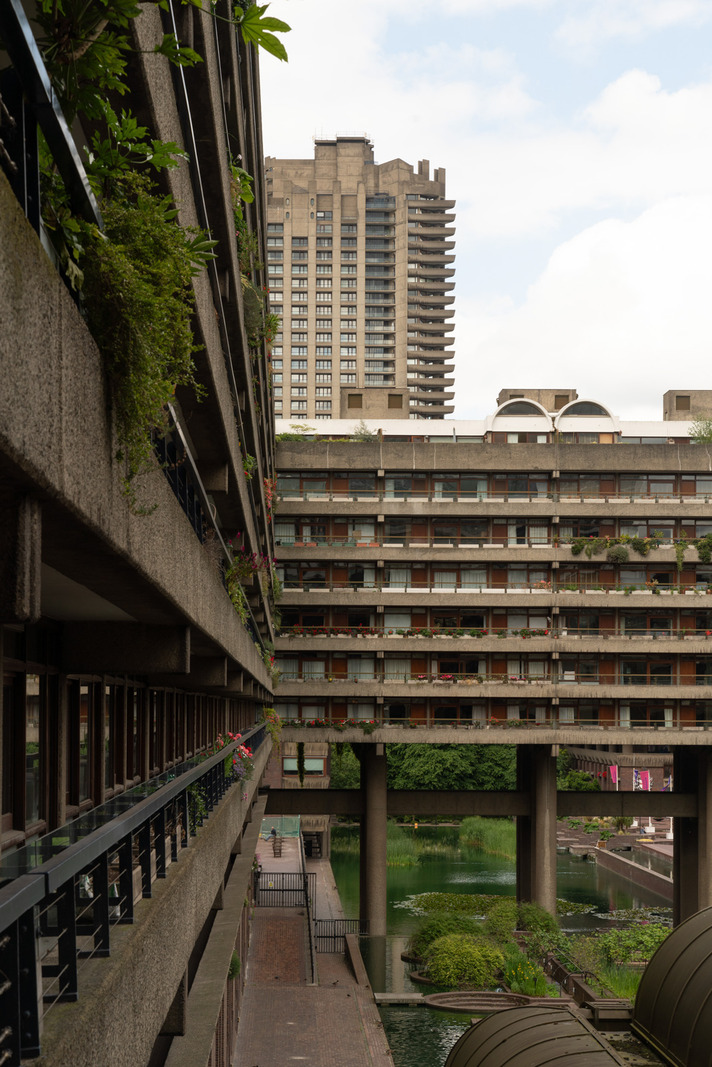

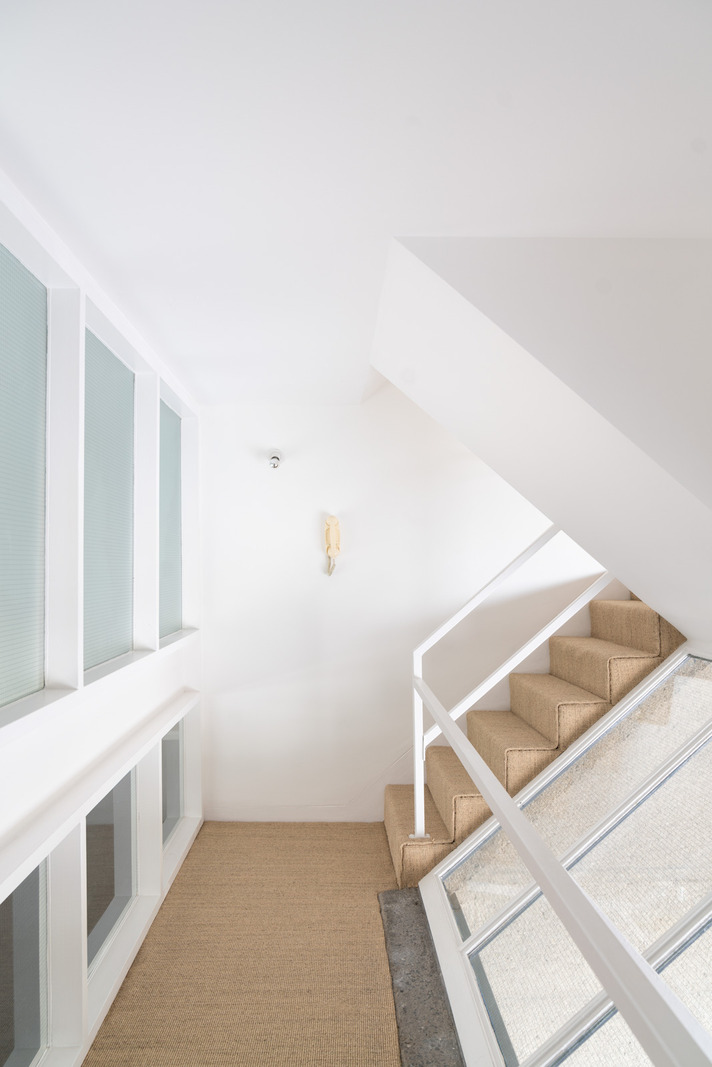

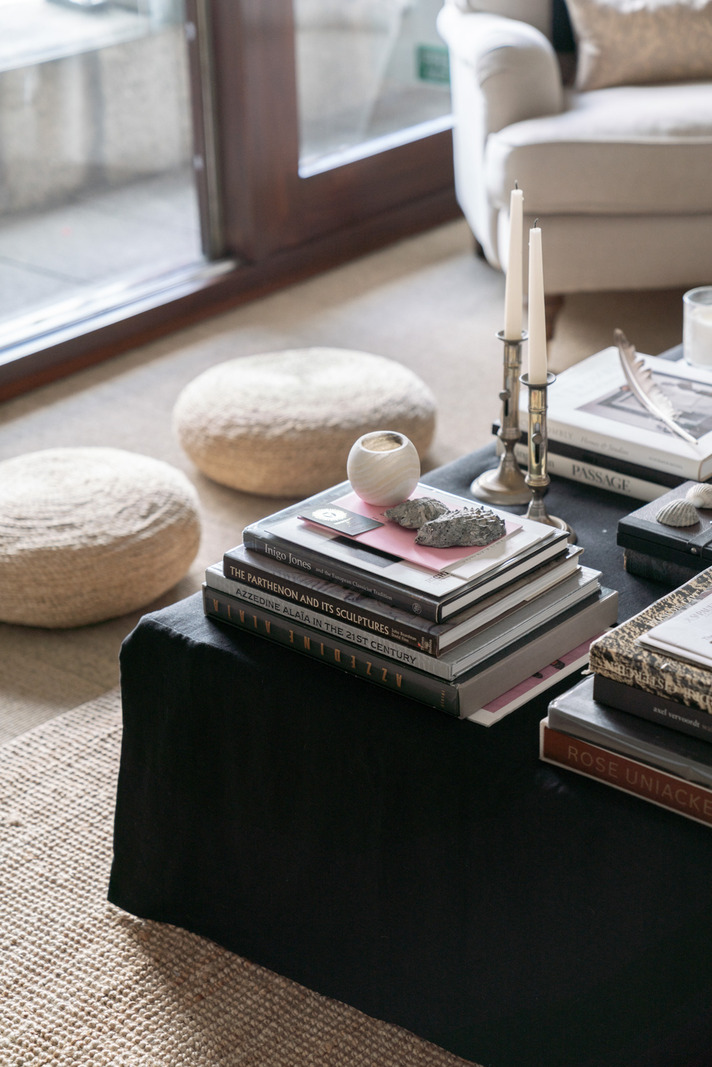

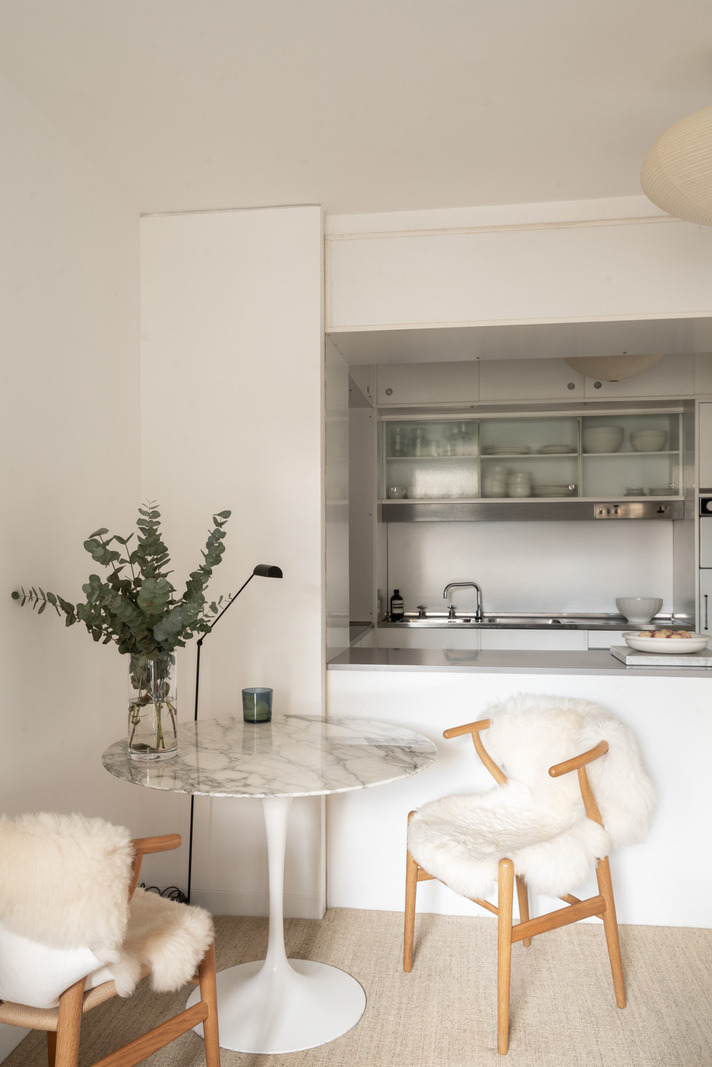
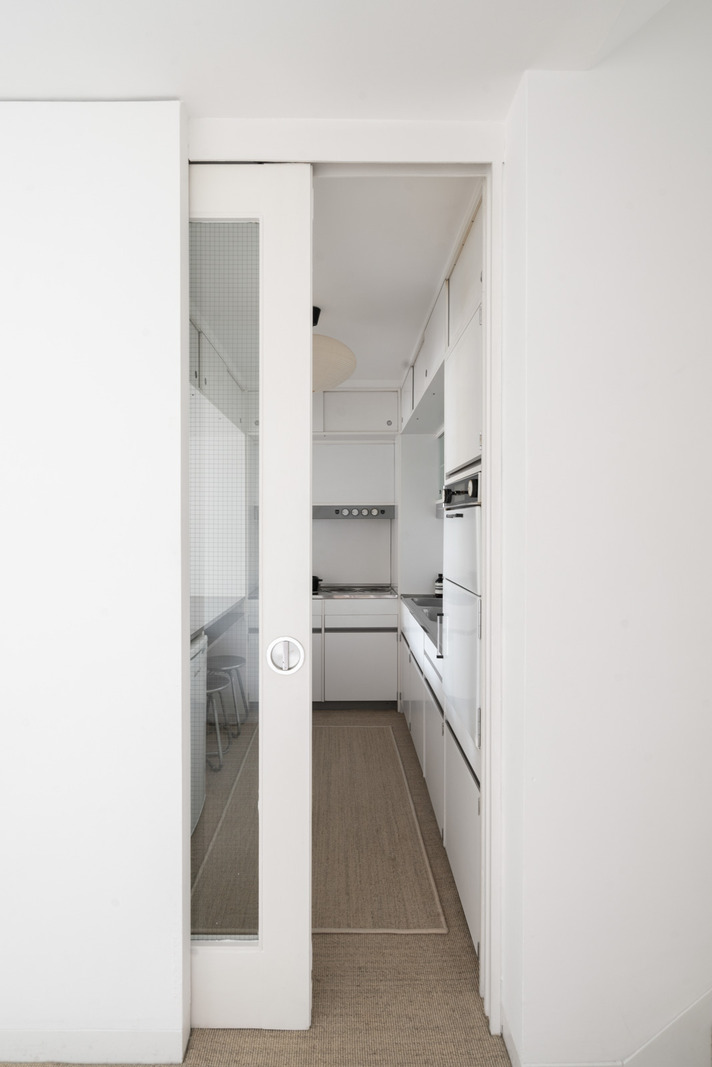

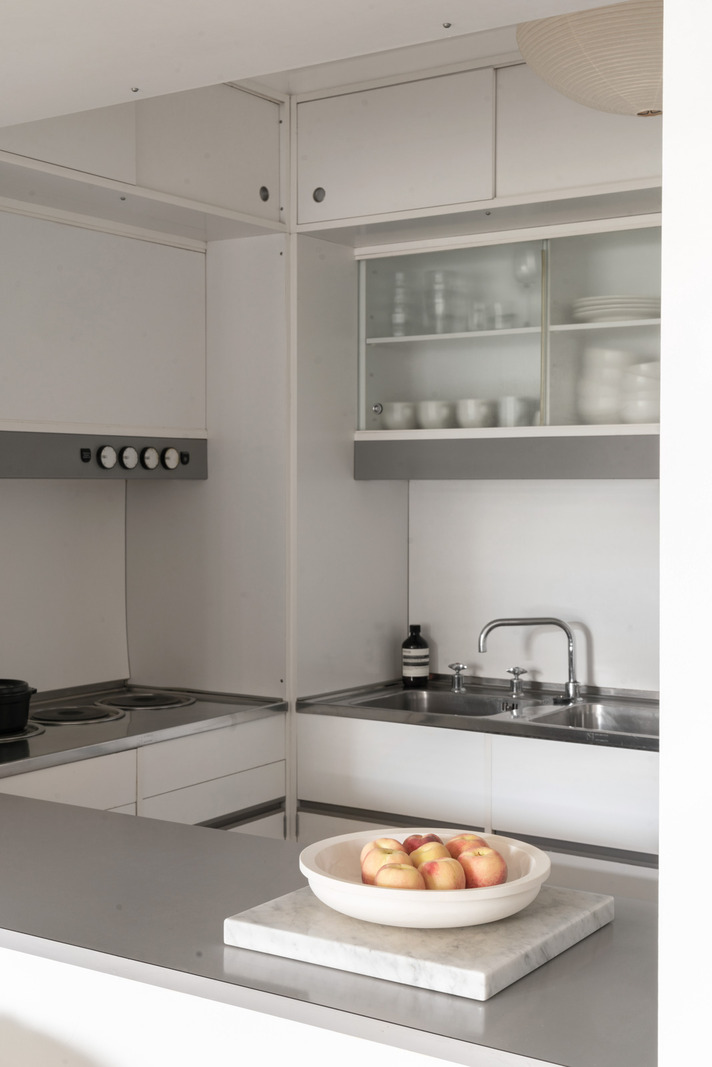





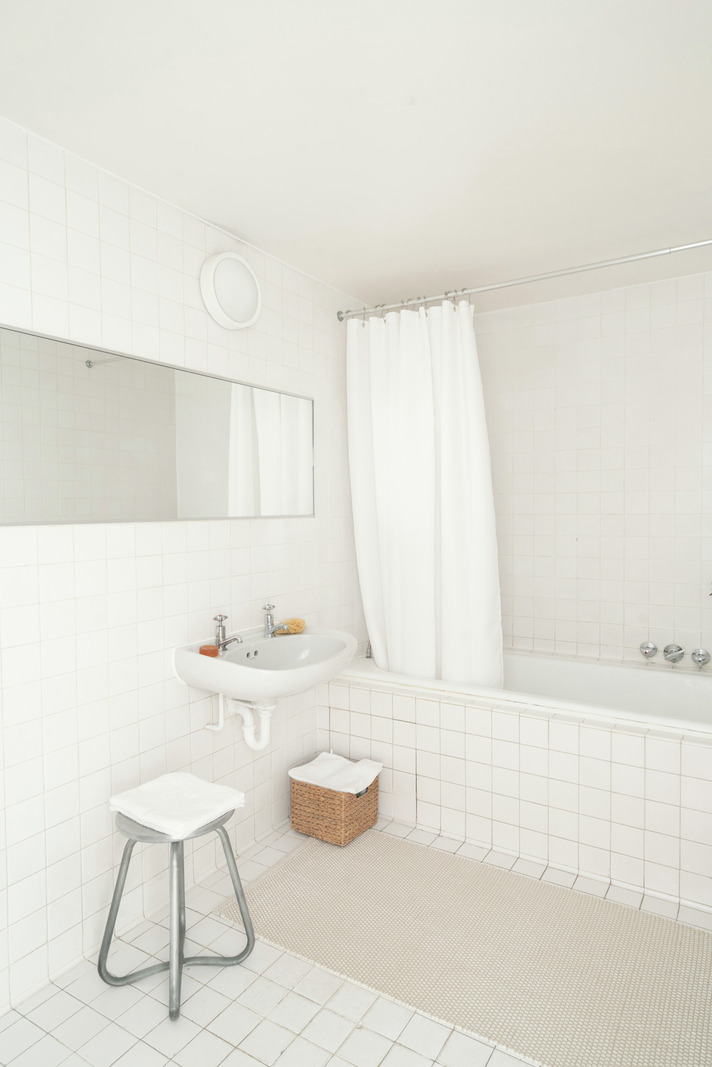
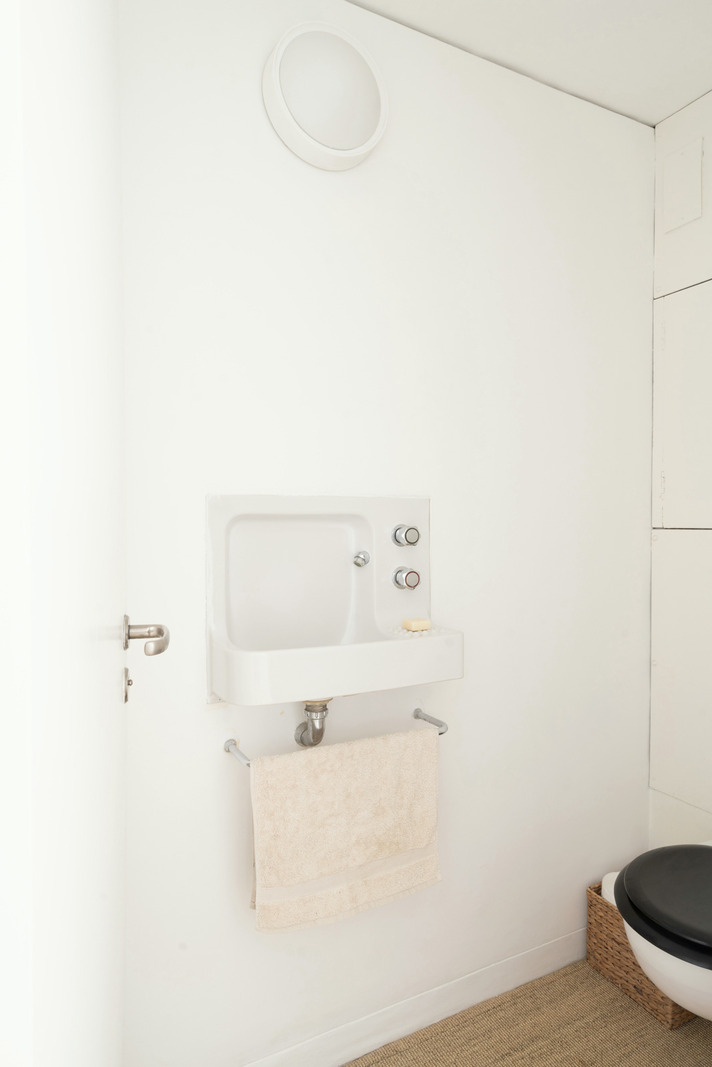


Willoughby House
Barbican, London EC2
Architect: Chamberlin, Powell & Bon
Register for similar homes“Rooms are treated as a series of interconnected three-dimensional cubes, creating dynamic half-storeys and a sense of flowing movement”
This exemplary apartment in the Grade II-listed Barbican’s Willoughby House has been kept in immaculate condition. The rare Type 93 home extends to almost 770 sq ft internally and retains all of its original features, fixtures and fittings, including the complete Brooke Marine kitchen. Sisal carpet has been introduced throughout, lending a textured, contemporary aesthetic in harmony with the estate’s visual intentions.
The Estate
Chamberlin, Powell and Bon designed the Barbican Estate after their success with the neighbouring Golden Lane Estate. Built to replace buildings destroyed by a night of bombing in December 1940, the Barbican is now lauded as a masterpiece of brutalist architecture.
There were over a hundred flat types when the Barbican Estate was built; some are contained to one building, whereas others are dotted across the Estate. Type 93 homes appear only in Willoughby House, with this being one of just four in the building. The apartment’s layout, split across four half-levels, is redolent of proto-modernist Adolf Loos’ ‘Raumplan’ theory, in which the rooms are treated as a series of interconnected three-dimensional cubes, creating dynamic half-storeys and a sense of flowing movement. For more information, see the History section.
The Tour
The apartment is positioned on the first floor of Willoughby House. One of its most unique features is in the private entrance hall, where angled sheets of glass at a low-level frame views over the ‘Highwalk’ below. Sisal carpet extends throughout the apartment, with underfloor heating below. This can be controlled separately on each floor.
The main living spaces are a half-level up, oriented towards the Barbican Lake; the fountain can be heard in the distance, and geraniums – the flowers of the Barbican – have been introduced in planters on the balcony. The room has a feeling of total peace, with simple white walls allowing the architectural lines of the space to take centre stage.
To one side is the galley kitchen, separated by a sliding glass pocket door. The room is in entirely original condition complete with Creda appliances, Brooke Marine cabinetry and GEC Anderson stainless steel countertops. A pull-out countertop forms a breakfast bar, with the original electric plates and oven behind; the original, working Garchey waste disposal unit remains in the sink. Everything has been immaculately taken care of and restored where necessary, down to the original sockets and steel switches.
The next half-level up is home to the separate bathroom and WC, again with their complete fixtures, fittings and finishes. The bathroom is home to a built-in bath with a showerhead above, with storage taking the form of mirrored cabinetry flush within the wall. The separate WC has its original Barbican sink, and the original toilet is complete with a matt black seat.
The bedroom occupies the highest half-level. The space is illuminated by sheets of glass with their original wooden frames, which overlook Moorfields Highwalk below. There are both blackout and sheer blinds to allow for full control over privacy and lighting levels, as well as double-glazed windows to ensure a restful sleeping environment. The space retains a full wall of built-in wardrobes, their ‘flying saucer’ handles carefully polished and restored. The space is brilliantly peaceful, yet just a short walk away from a plethora of London’s finest food, drink and culture.
Outdoor Space
One of the original intents of the Barbican plan was to provide an enclosed green sanctuary for those who lived there. As a result, residents have access to both private and public gardens. The private gardens extend to around two-and-a-half acres and comprise expansive lawns, various species of mature trees, and textual borders with native and exotic species. There are also dedicated areas for children’s play.
The Area
The Barbican Arts Centre is on its residents’ doorstep and houses a theatre, an art gallery, a concert venue, cinemas, and several bars and cafés. The City of London has also recently appointed Allies and Morrison Architects and Asif Khan Studio to deliver a multi-million-pound renewal of the Barbican Centre. The Centre forms a key part of the ‘Culture Mile’, the City of London’s cultural district stretching from Farringdon to Moorgate. The ‘Cultural Mile’ includes the Guildhall School of Music & Drama, and the London Symphony Orchestra.
The apartment is near an excellent selection of pubs and restaurants, including the nearby Smithfield Market, St. John, Luca, The Quality Chop House, and Exmouth Market. Whitecross Street also has a food market every weekday. St Paul’s, the River Thames, the South Bank and Tate Modern are all close by.
Transport links are excellent; Moorfields Highwalk underneath Willoughby House allows street-free access leading directly to the Moorgate Station entrance and Elizabeth Line in less than one minute’s walk. Moorgate also has the Northern, Hammersmith & City, Circle and Metropolitan Lines. There are further Underground stations at nearby Barbican (Circle, Hammersmith & City and Metropolitan Lines), Old Street (Northern Line) and Farringdon, which offers a host of Underground lines (Circle, Hammersmith & City, Metropolitan and Elizabeth Lines) as well as Thameslink services to Gatwick Airport, Brighton and Bedford.
Please note that this property is owned by an employee of The Modern House Ltd.
Tenure: Leasehold
Lease Length: Approx. 172 years remaining
Service Charge: Approx. £5,950 per annum (includes the 24-hour building attendant, underfloor heating, daily refuse collection, parcel reception, bicycle parking, visitor car parking (five hours a day for free) and use of communal gardens)
Ground Rent: Peppercorn
Council Tax Band: E
Please note that all areas, measurements and distances given in these particulars are approximate and rounded. The text, photographs and floor plans are for general guidance only. The Modern House has not tested any services, appliances or specific fittings — prospective purchasers are advised to inspect the property themselves. All fixtures, fittings and furniture not specifically itemised within these particulars are deemed removable by the vendor.




History
Between 1954 and 1968, Peter Chamberlin, Geoffry Powell and Christoph Bon drew up four distinct schemes for the Barbican that they continued to modify even after construction had started in 1965. Their intention was to create a residential precinct which would, as they wrote in the 1959 Barbican Redevelopment Plan, allow people to live “both conveniently and with pleasure”. Their mission would include a quiet pedestrian space that would be “uninterrupted by road traffic”, where people would be able to “move about freely enjoying constantly changing perspectives of terraces, lawns, trees and flowers” and see “the new buildings reflected in the ornamental lake.”
The first building on the estate, Speed House, was officially opened in 1969, and the final building, Shakespeare Tower, was completed in 1969. In 2001, the Barbican Estate was given a Grade-II listing. Contained within its 40 acres are three towers, 13 terrace blocks, two mews, and several separate residential buildings. The green communal gardens on the estate offset the striking concrete profile that the Barbican is known for; residents are given exclusive access to a range of gardens, including a thriving wildlife garden managed by volunteer residents. The Barbican is also known for its series of labyrinthine, high-level walkways that connect the estate while separating pedestrians from cars below.





